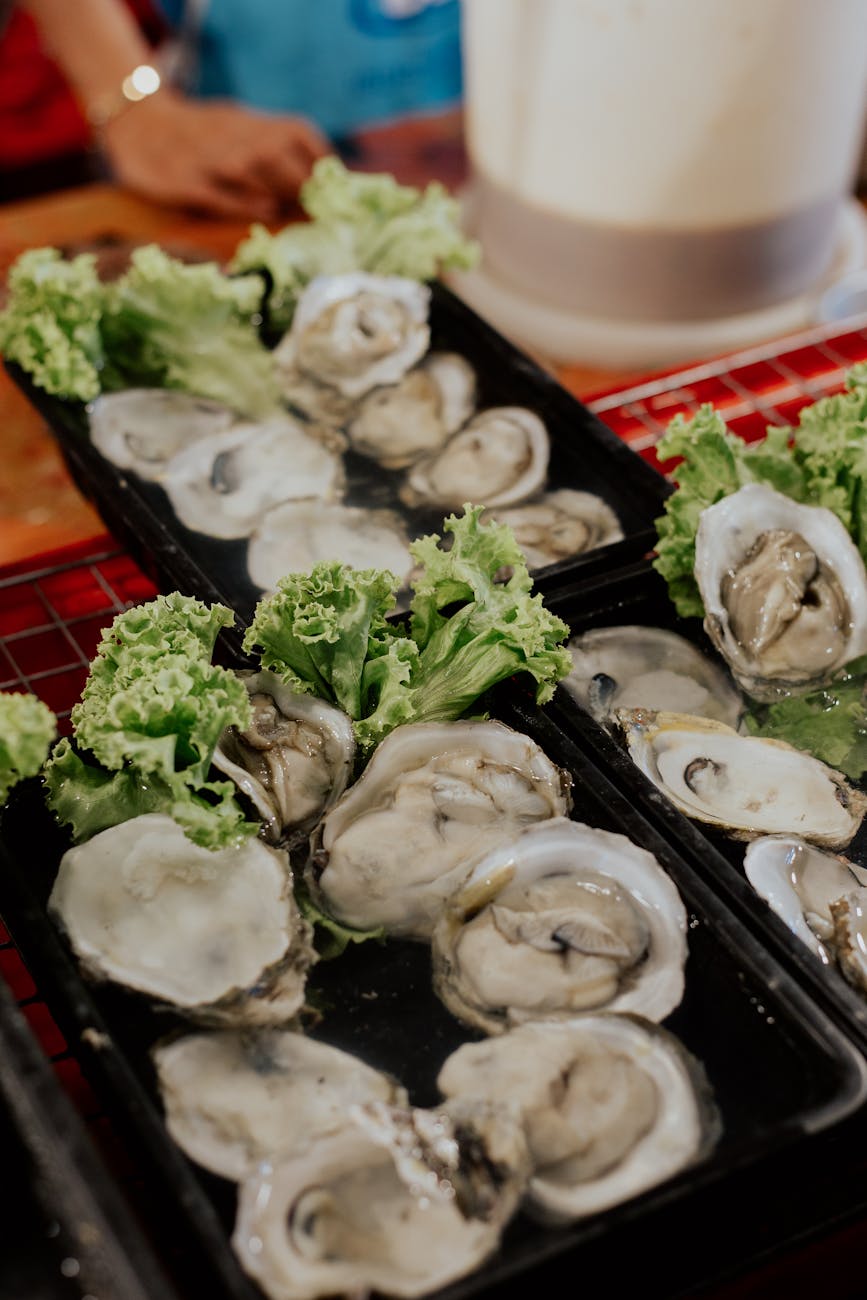Thailand is often regarded as the culinary paradise of Southeast Asia, captivating travelers with its vibrant flavors and aromatic dishes. A trip to Thailand is not just about exploring breathtaking temples or lounging on stunning beaches; it is also a journey through an unparalleled gastronomic landscape. What sets Thai cuisine apart are the secret local ingredients that elevate simple meals into unforgettable experiences. Discover how these elements come together to create a culinary tradition that is rich, diverse, and utterly delicious.
As you delve into the essence of Thai cooking, you’ll uncover the unique herbs, spices, and techniques that are rarely found outside of local kitchens. From the charming street stalls of Bangkok to the lavish dining experiences in Chiang Mai, every meal tells a story enriched by regional influences and family traditions. In this blog post, we will explore the heart and soul of Thailand’s culinary scene, revealing the ingredients that truly make Thai dishes unforgettable and sharing insights on how to replicate these vibrant flavors at home.
Table of Contents
- Local Ingredients That Define Thai Cuisine
- Understanding Thai Culinary Culture
- Popular Dishes You Must Try
- Tips for Cooking Authentic Thai Dishes
- Your Culinary Adventure in Thailand
- Final Thoughts on Experiencing Thailand’s Culinary Delights
- Frequently Asked Questions
Local Ingredients That Define Thai Cuisine
When embarking on a culinary journey through Thailand, understanding the essential local ingredients is vital. Ingredients like lemongrass, galangal, and kaffir lime are the backbone of many traditional dishes. Lemongrass offers a refreshing citrus note, while galangal, often mistaken for ginger, provides an earthy aroma that is uniquely aromatic. Kaffir lime leaves contribute a distinct flavor that is irreplaceable in Thai soups, such as Tom Yum. These ingredients are not only flavor enhancers but also hold cultural significance, representing the harmonious balance of flavors that Thai cuisine is known for.
Additionally, the utilization of fish sauce is critical in imparting that umami element which is a signature of Thai cooking. This fermented condiment brings depth to dishes like Pad Thai and green curries, while palm sugar offsets the dish’s natural spiciness and acidity. The complexity of Thai cuisine arises from this interplay of various ingredients, and understanding their role helps home cooks recreate genuine Thai meals no matter where they are in the world.
Understanding Thai Culinary Culture
Thai culinary culture is deeply intertwined with the country’s history, geography, and lifestyle. Food in Thailand is often viewed as a way to express love and hospitality, resulting in a rich tapestry of communal feasting and shared experiences. The family-style dining approach cultivates a sense of togetherness, elevating every meal into a social occasion. Thai meals typically balance the four essential tastes: sweet, sour, salty, and spicy, appealing to the full range of human tastes. This balance showcases the country’s agricultural abundance, with proteins, vegetables, and herbs sourced from local farms and fisherman.
Moreover, the philosophy of “Nam Pla Wan” or sweet fish sauce reflects the intricate relationship between food and culture. The use of five primary flavors not only satisfies the palate but also embodies the very essence of Thai life—a celebration of simplicity, freshness, and complexity that leaves an indelible mark on visitors. Experience this firsthand by participating in local cooking classes, where you can immerse yourself in the daily life of Thai families while learning their recipes and traditions.
Popular Dishes You Must Try
When it comes to Thai food, certain dishes have gained international acclaim for their incredible flavors and textures. A must-try is Pad Thai, an iconic stir-fried noodle dish that elegantly combines rice noodles with tofu, shrimp, or chicken, and is garnished with crushed peanuts, lime, and bean sprouts. The fusion of textures, from crunchy to chewy, mirrors the lively streets of Thailand.
Another memorable dish is Som Tum, a spicy green papaya salad typically seasoned with fish sauce, lime juice, and chilies. This dish epitomizes the Thai knack for balancing flavors, making it a refreshing antidote to the heat. Don’t miss out on traditional curries, such as Massaman Curry or Green Curry, whose complexity comes from a blend of various spices and fresh ingredients. Each bite is a reminder of Thailand’s diverse geography and its culinary craftsmanship, making these dishes worth savoring during your travels.
Tips for Cooking Authentic Thai Dishes
For those eager to bring Thai flavors into their own kitchens, a few foundational tips can significantly enhance your cooking experience. Start by sourcing quality ingredients; fresh produce, authentic spices, and sauces make all the difference. Visit local Asian markets for fresh herbs like Thai basil and coriander, or consider growing your own. Learning the proper techniques, such as stir-frying at high heat and balancing flavors, can elevate your dishes significantly.
Moreover, experimenting with authentic recipes soaks in the essence of Thai cooking. Invest some time in understanding the balance of sour, salty, sweet, and spicy to truly master Thai cuisine. Engage with local chefs through online platforms or classes to learn their secrets and adapt their skills into your cooking repertoire. This kind of dedication will enable you to create dishes that echo the rich traditions of Thailand while putting your unique spin on them.
Your Culinary Adventure in Thailand
No trip to Thailand is complete without immersing yourself in the culinary adventures the country has to offer. From bustling street markets to serene cooking schools in the countryside, the opportunities to indulge in fabulous Thai cuisine are endless. Engage with local vendors and unlock the joy of street food, where each bite narrates a story filled with flavor and tradition. Try your hand at cooking lessons in historic towns like Chiang Mai, allowing you to learn from talented chefs who are eager to share their knowledge on preparing authentic dishes.
Additionally, consider local food festivals, often celebrated with much enthusiasm, presenting a golden opportunity to sample a variety of regional specialties. Indulging in these experiences not only satiates culinary cravings but also deepens your understanding of Thai culture. Through engaging with locals, you will acquire insights that transcend the culinary world, allowing you to grasp the heart of Thailand in every flavorful bite.
Capturing the Essence of Thai Cuisine Through Local Ingredients
Ultimately, the irresistible allure of Thai cuisine lies in its ability to excite the senses, inviting you to explore and appreciate the brilliance of local ingredients. As you traverse the streets of Thailand, every dish becomes an adventure, waiting to be savored and shared. Celebrate the harmony and balance that defines this unique culinary art form, and remember the significance of every ingredient that goes into making the meals unforgettable.
Whether you are indulging in a sumptuous spread at a local eatery or attempting to recreate those flavors in your kitchen, the spirit of Thai food is rooted in sharing and connection. So, take the plunge and embark on this tantalizing journey of flavors, textures, and aromas that will not only satiate your palate but also create lasting memories for years to come.
Frequently Asked Questions
What are some essential ingredients in Thai cooking?
Essential ingredients in Thai cooking include lemongrass, galangal, fish sauce, chili peppers, and fresh herbs like Thai basil and cilantro. Each ingredient plays a vital role in creating the signature flavors of Thai dishes.
How can I make my Thai food taste authentic?
To achieve authenticity in your Thai dishes, focus on using fresh, high-quality ingredients and prepare traditional recipes that highlight the balance of sweet, salty, sour, and spicy flavors. Engaging in local cooking classes can also provide insights into authentic techniques.
What are some must-try Thai dishes for beginners?
For those new to Thai cuisine, starting with dishes like Pad Thai, Tom Yum soup, green curry, and mango sticky rice can provide a delightful introduction to the diverse flavors and textures that Thai food offers.
Can I find Thai ingredients outside of Thailand?
Yes, many Thai ingredients can be found at Asian grocery stores or online retailers. If specific ingredients are unavailable, consider seeking alternatives or using substitutes that capture the essence of the flavors you want to recreate.
Image Credit: Pexels





